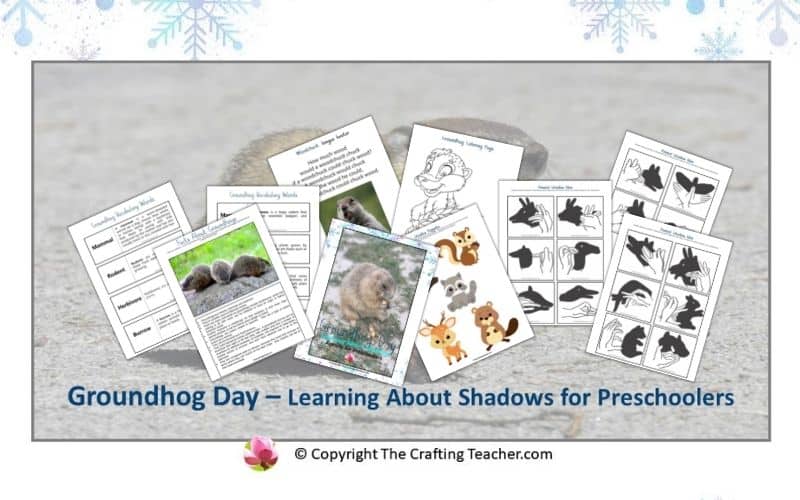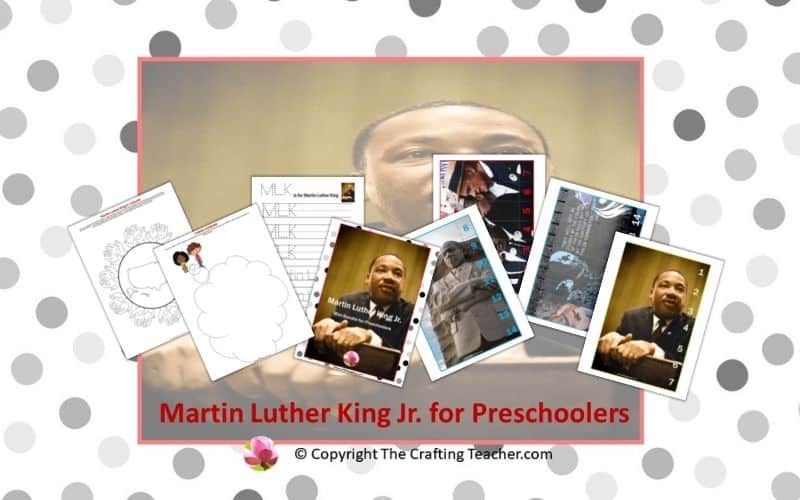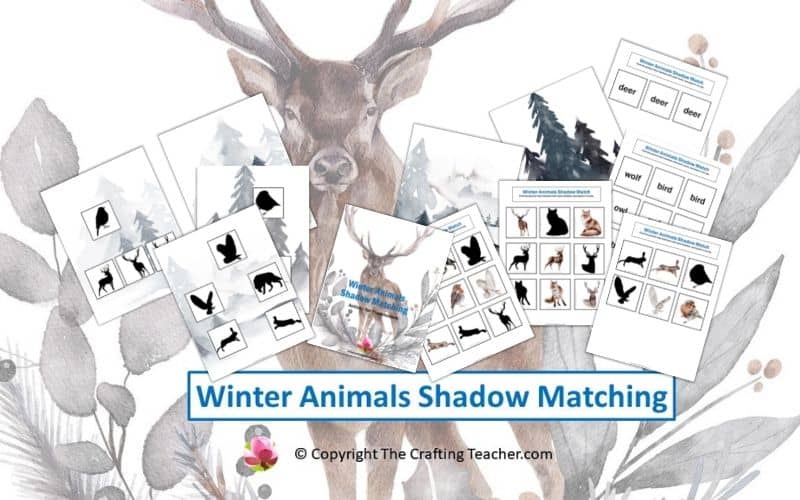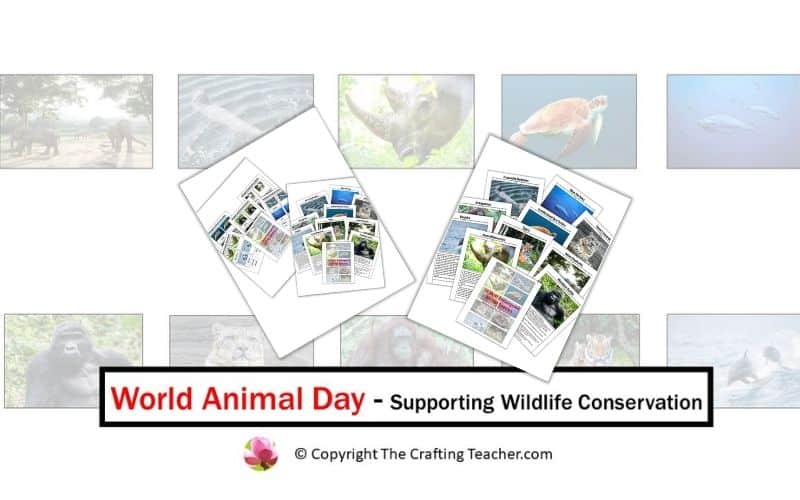Groundhog Day – Learning About Shadows
Affiliate Disclosure: “This post contains affiliate links, which means I receive a small commission, at no extra cost to you, if you make a purchase using those links.”
Groundhog Day gives you the perfect opportunity to help your preschoolers learn about shadows, how they are formed, why they change, what is necessary for them to appear, and other scientific concepts. To help you with this, I’ve included a FREE Groundhog Day – Learning About Shadows pack, which can be found at the end of this post.
This pack includes:
- Facts about groundhogs.
- Vocabulary definition cards include the words mammal, rodent, herbivore, burrow, Marmota, crops, hibernation, and dormant.
- “Woodchuck” tongue twister poster.
- Five shadow puppets
- Sixteen tiles with hand animal shadows.
- One groundhog coloring page.

History of the Groundhog Day
Groundhog Day is celebrated on February 2nd. This is a unique American celebration where people believe these animals can predict the weather. There is a legend behind this that says that the groundhog is supposed to wake up from his winter sleep or hibernation and come out of his burrow. If he sees his shadow, he will go back into his hole and go back to sleep, and winter will last for another 6 weeks. But, if he doesn’t see his shadow, he will stay up and winter will be over.
This holiday was originally from Germany and Poland, but the Iroquois Indians have a very similar belief involving bears, instead of groundhogs. But, before we talk about shadows, let’s find out what is a groundhog.
What is a Groundhog
We don’t have groundhogs in my country, and learning about them was very interesting to me. I cannot continue talking about shadows without giving you some important facts taken from National Geographic, to help your preschoolers learn about these fascinating animals.
- Groundhogs are mammals, rodents, and herbivores.
- Their scientific name is Marmota Monax.
- There are many nicknames for groundhogs including woodchucks, which have nothing to do with wood, but it’s believed to have its origin in Native American words.
- Another nickname is whistle-pig” for their tendency to emit short, high-pitched whistles, to tell their friends when danger is closed.
- Groundhogs are closely related to squirrels. They are a type of rodent known as a marmot.
- They can be found all over North America.
- They build impressive homes called burrows. A groundhog’s burrow can be anywhere from eight to 66 feet long, with multiple exits and several chambers for different purposes, for example, one chamber for hibernation, another section for summer, and even have separate one to go to the bathroom.
- They are considered pets by farmers because they build their burrows on farms where they can munch on the best crops. Also, tractors can fall on their holes and break.
- Groundhogs like to live alone, and only seek company when they want to mate. Even groundhog mothers take care of their babies for a short period and then go their separate ways.
- Groundhogs are known as “true hibernators,” going into a dormant state—in which their body temperature and heart rate fall dramatically—from late fall until late winter or early spring.
The FREE pack includes a page with facts about groundhogs and vocabulary words’ definitions.
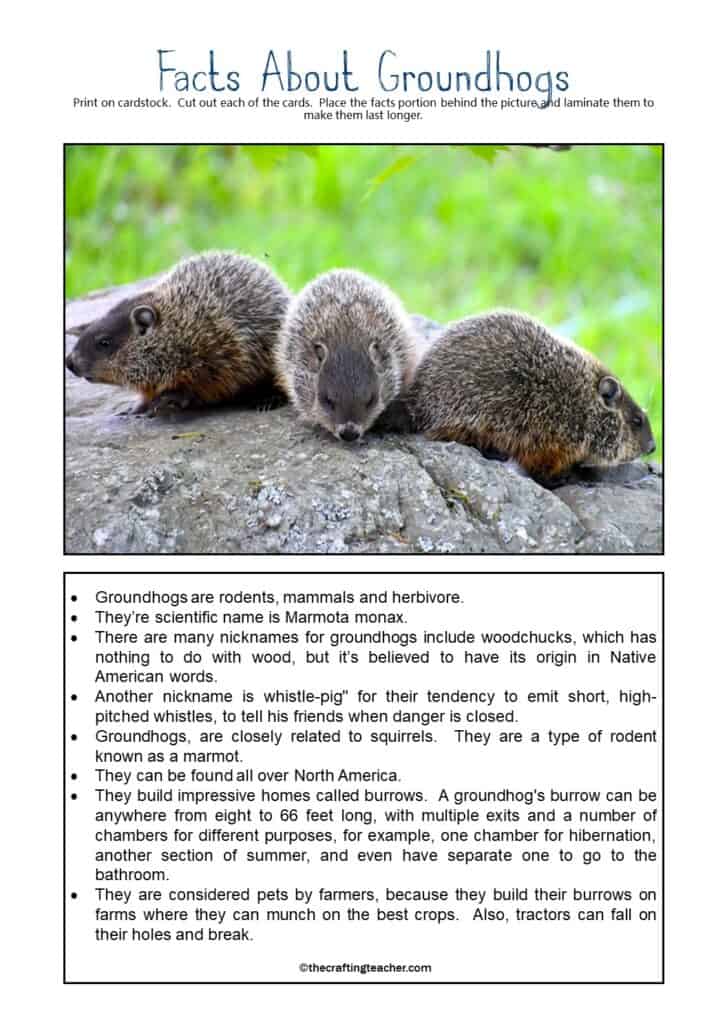
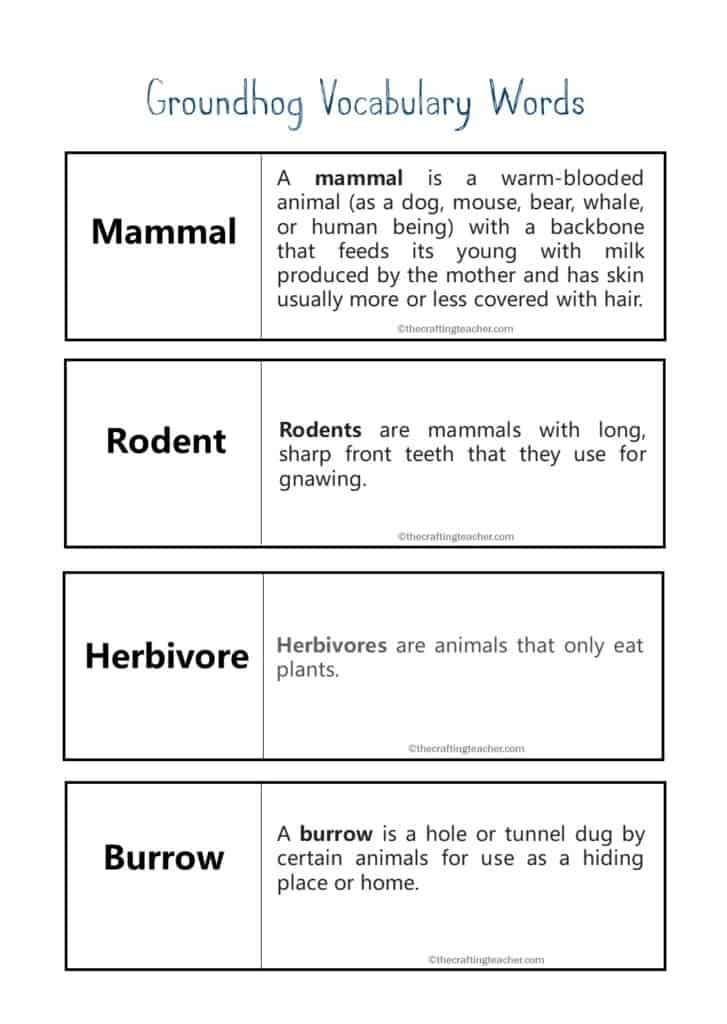
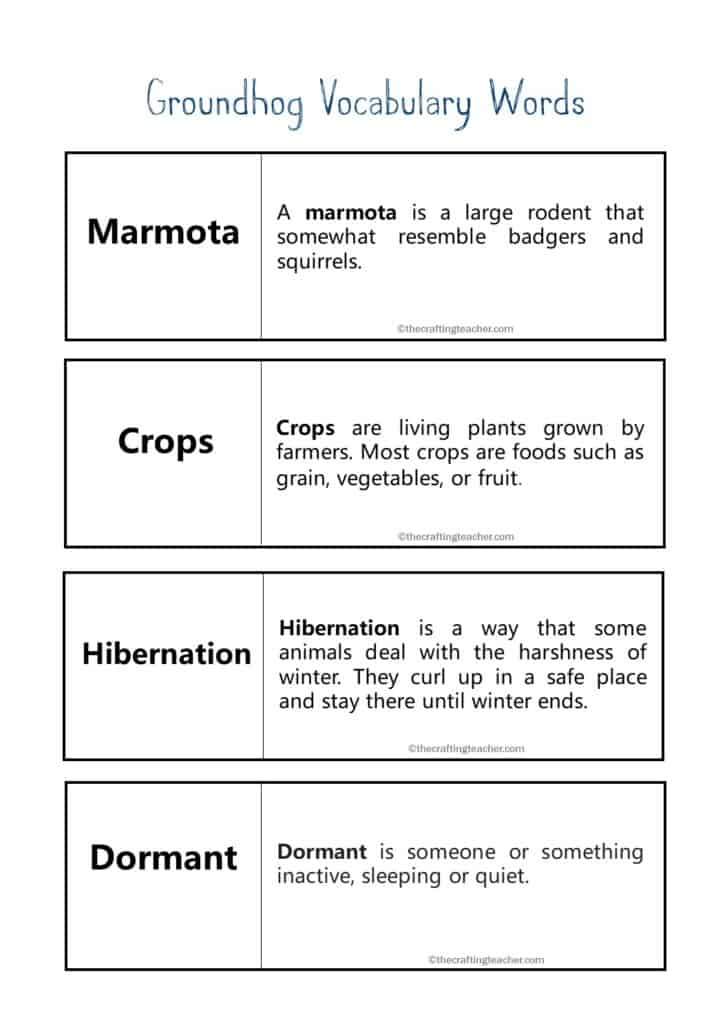
Also, below is a very informative video about groundhogs, that you can use to present your preschoolers a clear vision about groundhogs, especially for your visual learners.
Just for fun, teach your preschoolers the “Woodchuck” twister. The poster below is included in your FREE pack.
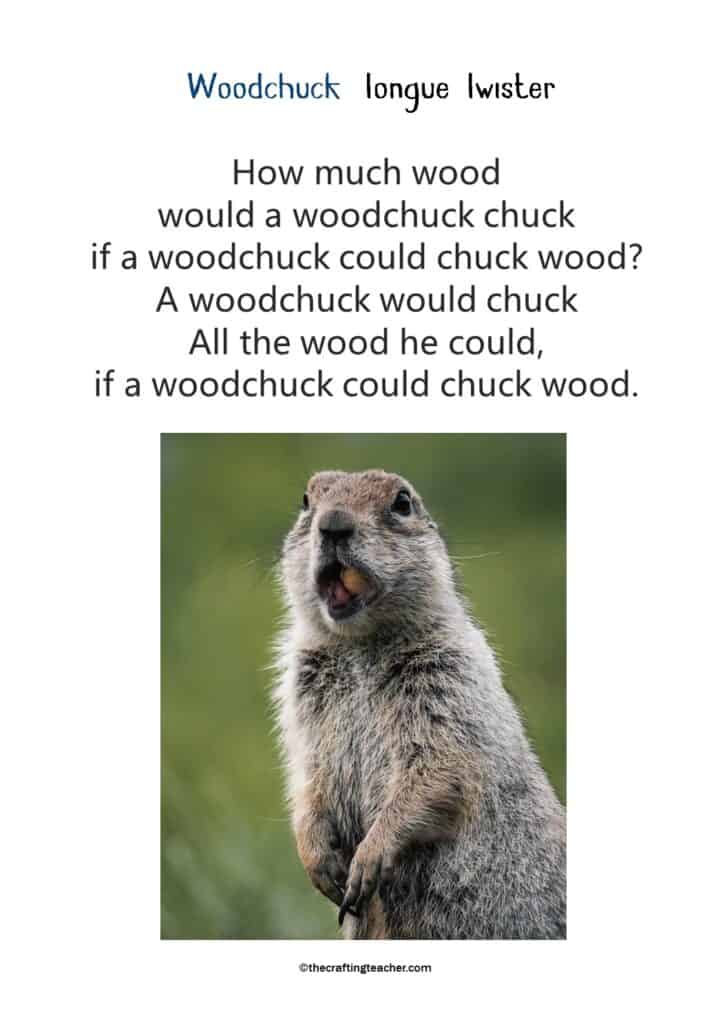
Importance of Science
Since Groundhog Day is fast approaching, it is a good idea to use this excuse to learn and explore the important science behind shadows.
Why learning science is important? Because it’s all around us, and children are always looking to explore, experiment, discover, and find out why things move, look for change.
There’s science behind the formation of shadows, and every child I’ve known is curious about and loves to play with them. They question why they are formed. Why they cannot see shadows when is dark? Why sometimes do they see their shadow in different positions? How can they make shadows if they want to?
The Science Behind Shadows
For any shadow to be formed, it is necessary to have a source of light, natural or artificial, that is blocked by an object or material. When that happens, the light passes the edges of that object or material and forms an outline for the shadow, because it always travels in a straight line.
Shadows will change their shape and size depending on the distance and angle of a light source to an object. In other words, if you place yourself or an object in the same position or spot at different times of day, or if the light source is reflected from a different angle, the shadow will change.
Also, two light sources reflected at the same time produce two shadows, but, if the light source hits something transparent like a window, there will be no shadow.
With this information helpful, the children make a connection with the groundhog legend, asking them what they think is the reason the groundhog doesn’t see his shadow. Have a small discussion and then remind the children that if the day that he comes out of his burrow is dark, he will not see his shadow, because there’s no light.
The video about shadows below explains in a clear and easy-to-understand way how shadows are formed.
Experiments with Shadows
#1 Experiment – Use your bodies. This experiment is fun for kids because they can manipulate the shadow shapes using their bodies in different positions. The best way is to go outside on a sunny day. If that’s not possible and you have to do it inside, turn off the room’s main light and use a lantern. Children can see how their shadows change, according to the position of their bodies. They can also observe that their shadow “follows” them.
#2 Experiment – Use shadow puppets. In the FREE pack, I included five animals, a groundhog, a squirrel, a raccoon, a deer, and a beaver. Print them out in white cardstock, cut them out, and laminate them. Then glue them to a big wooden stick. Have the children make shadows using their puppets.
You can also turn these into a guessing game. Divide the class into two groups, the “puppeteers” and the “guessers”. Have the puppeteers use their puppets to make shadows and the guessers to (well…) guess what animal is reflected in the shadow. Then the children can switch places.
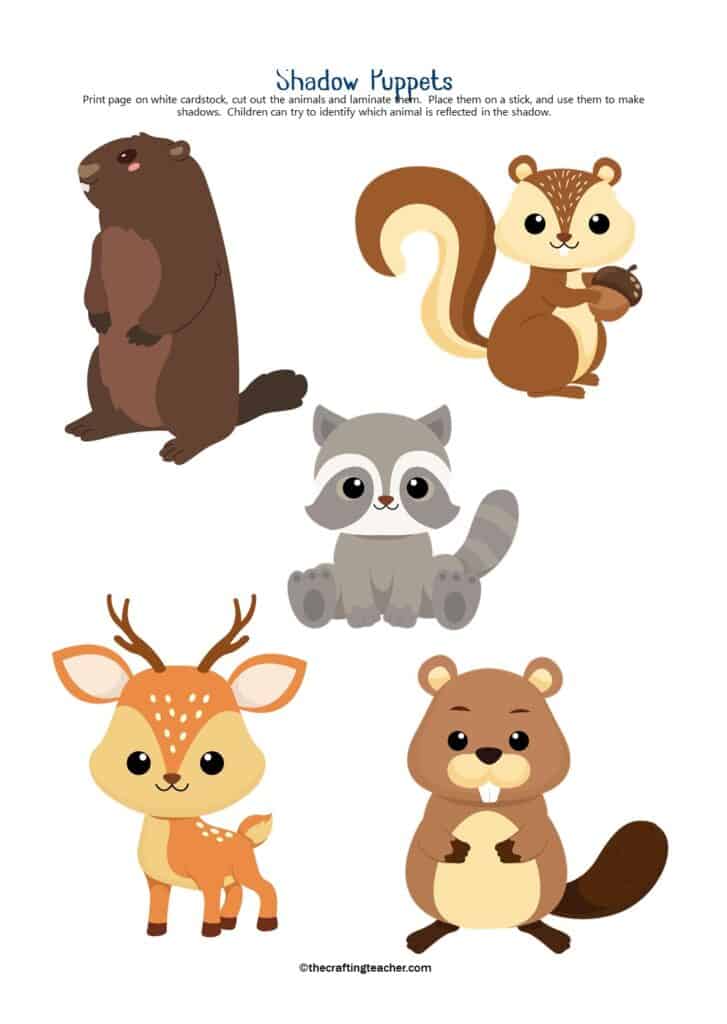
#3 Experiment – Create animal shadows using their shadows. I’ve provided in the FREE pack 15 tiles showing how to place hands to shape different animals’ shadows. Print out the tiles in white cardstock cut them out and laminate them for durability. Have the children choose a tile and try to place their hands to shape the animal shown in the tile.
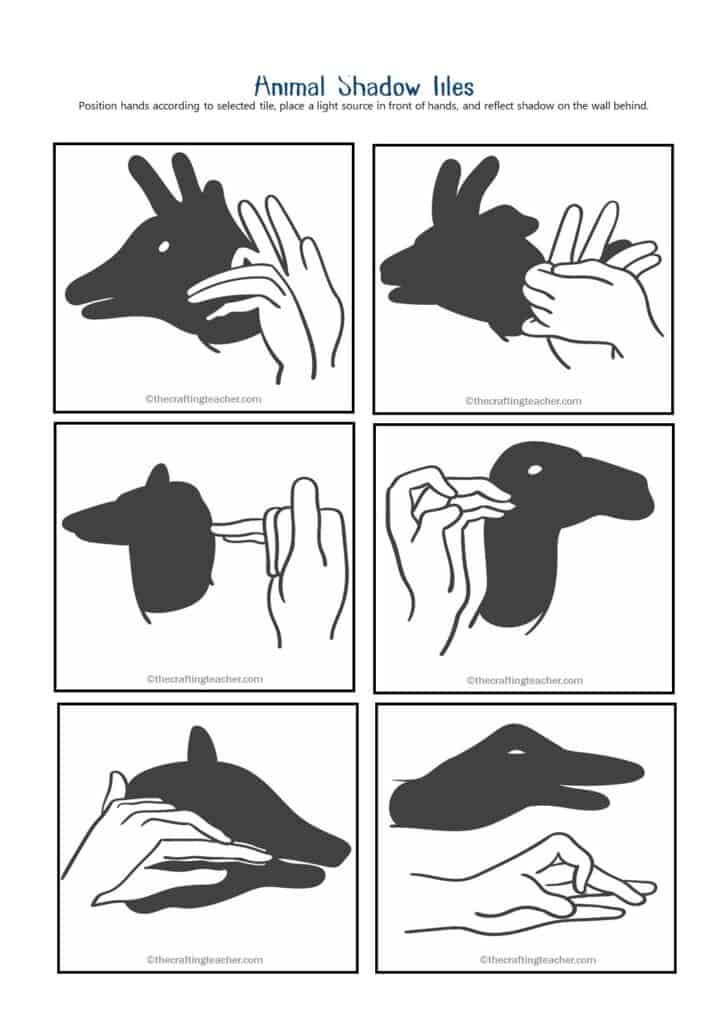
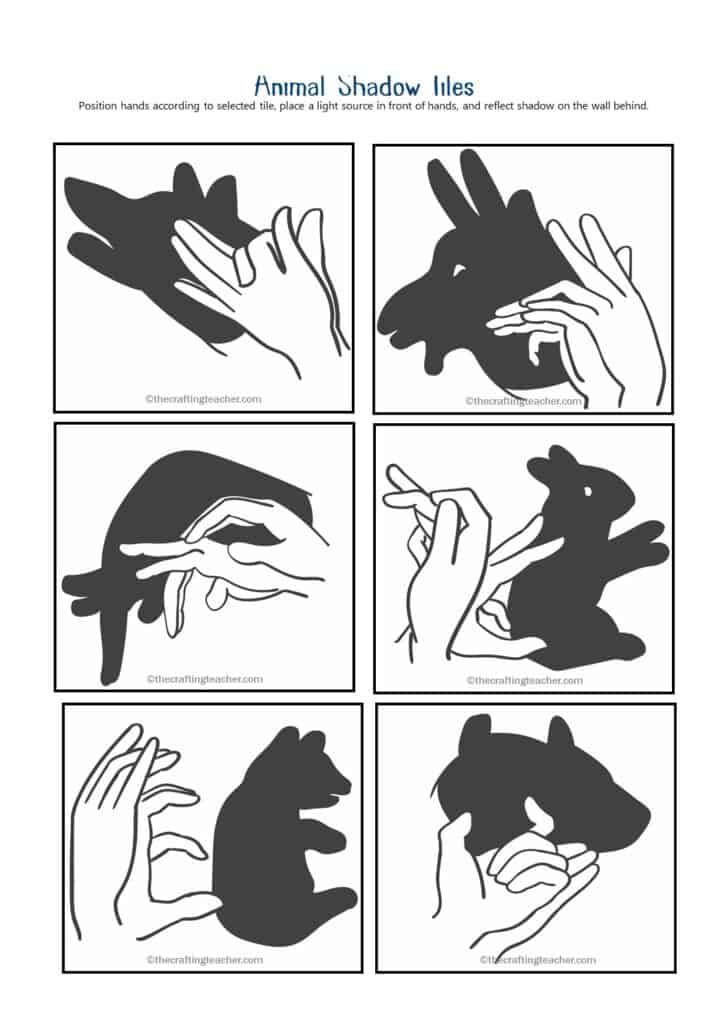
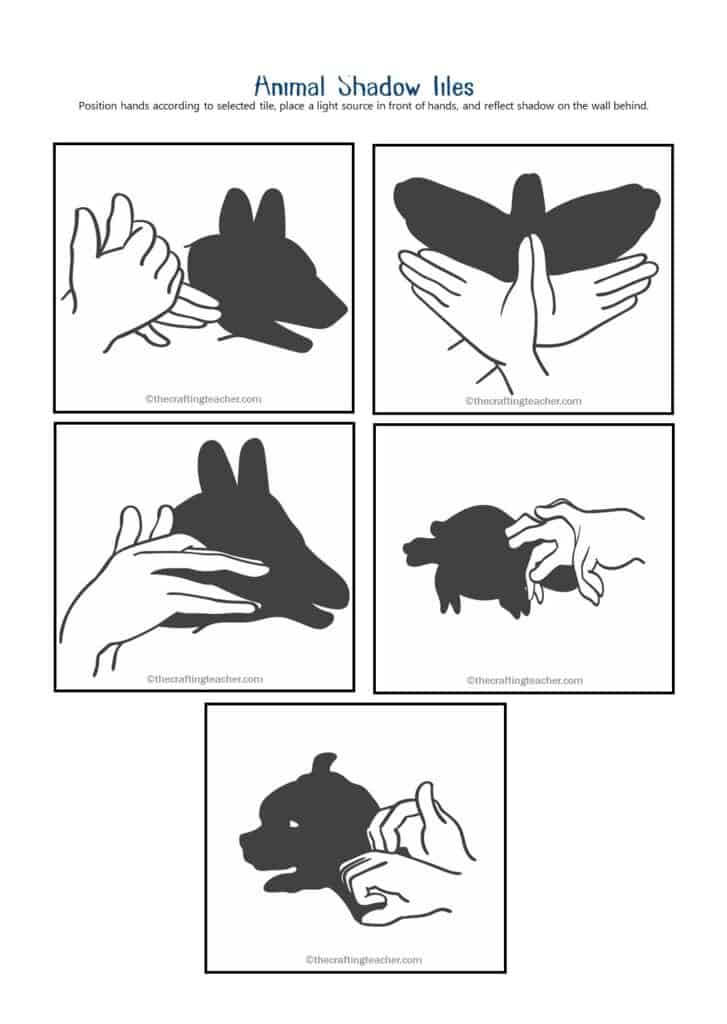
#4 Experiment – Do shadow tracing. Have the children select one object and place it against a light source, to have the shadow being reflected on a sheet of paper. Then invite them to use pencils, crayons, or markers to trace the outline of the shadow.
Books About Groundhogs and Shadows
You can take advantage of this theme to bring different types of books to your library, centers, and book baskets. You can include books about groundhogs, shadows, winter, and hibernation, among others. These are some examples of books you can use, which can be found at your local library, used books store, and Amazon. I’ve included my affiliate link in each picture, for a faster checkout.
- Light: Shadows, Mirrors, and Rainbows by Natalie Myra Rosinsky. Learn about the importance of light in our everyday lives. Discover how to make reflections, shadows, and rainbows. This is a great nonfiction read-aloud book with places to stop to do activities together. If you are looking for clear, concise science books for kids, this is a perfect start!
- Winter Sleep: A Hibernation Story by Sean Taylor. In this cozy bedtime story, follow a child and his grandma through a winter landscape to explore how the Earth goes to sleep for winter. Spot the sleeping animals as the tale unfolds, then learn about their hibernation habits from the information pages at the end.
- Groundhog’s Runway Shadow by David Biedrzychi. Phil and his shadow do everything together. But where Phil is steady, predictable, and a little boring, Shadow is adventurous, freewheeling—even a bit rude. So they don’t get along so well anymore. Fed up, the two have a fallout, and Shadow runs off to see the world.
- Groundhog’s Day Off by Rob Pearlman. This hilarious story talks about how that year the groundhog is on strike and decided to leave without informing the town if Spring is coming or not, so the town tries to convince other animals to take the job.
- Groundhog Day! by Gail Gibbons. This is a non-fiction book where the author talks about the traditions and history of Groundhog’s Day, as well as the habits and activities of groundhogs.
- The Night Before Groundhog Day by Natasha Wing. The anticipation is building: Will the groundhog see his shadow? Will there be six more weeks of winter? Get ready for this festive occasion with the countdown to Groundhog Day in this fun, rhyming story.
- Groundhog Day by Lisa M. Herrington. This fact-filled book introduces the youngest readers to an in-depth look at this uniquely American holiday and the History of Groundhog Day.
- My Shadow by Robert Louis Stevenson. Inside, outside, climbing up the stairs, or jumping into bed, your shadow may be following you! He may even be one step ahead as you run down the street! Kids are sure to learn new ways to play with their shadows with this book.
- Shadows and Reflections by Daniel Nunn. This book looks at shadows and reflections introducing young readers to the concept of light, and explaining key scientific concepts through a combination of simple, using leveled text and stunning photographs.
Pin It For Later
If you are in a rush and don’t have time to read the post and download the printable but want to save it for later, pin this to your Groundhog Day or Science Pinterest board for later.
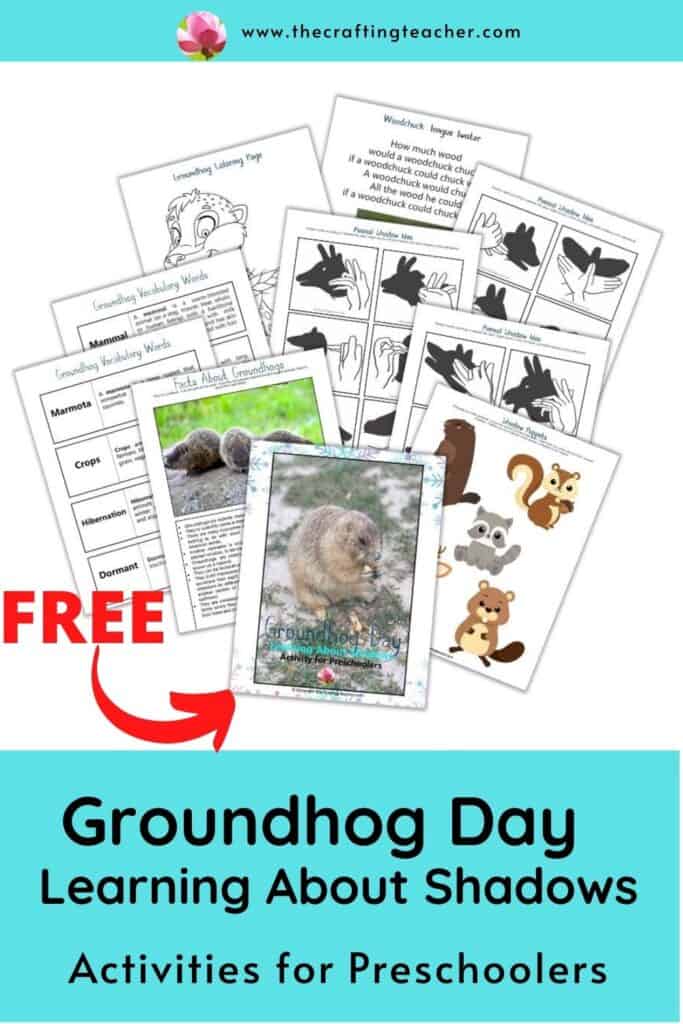
I hope your kids enjoy these activities, and they get to understand more about shadows. Don’t forget to grab your FREE pack. Just click on the link below and type your information, for an immediate download.
Be happy, safe, and creative. I wish you well.
Love,

P.D. Please let me know if you like this game worked for you, or if you think I need to add or replace something. My goal is to help you in any way I can and I don’t like anything better than to post something that you might find useful. Also, if you come up with different ideas and want to share them, I would love to post them as well.

